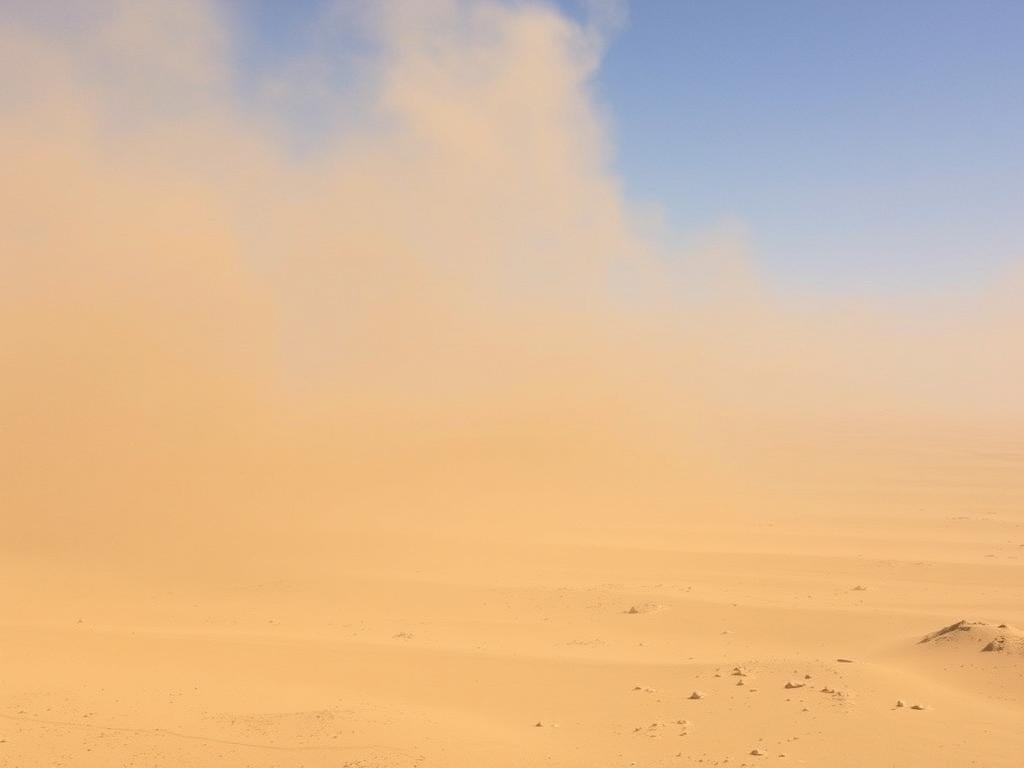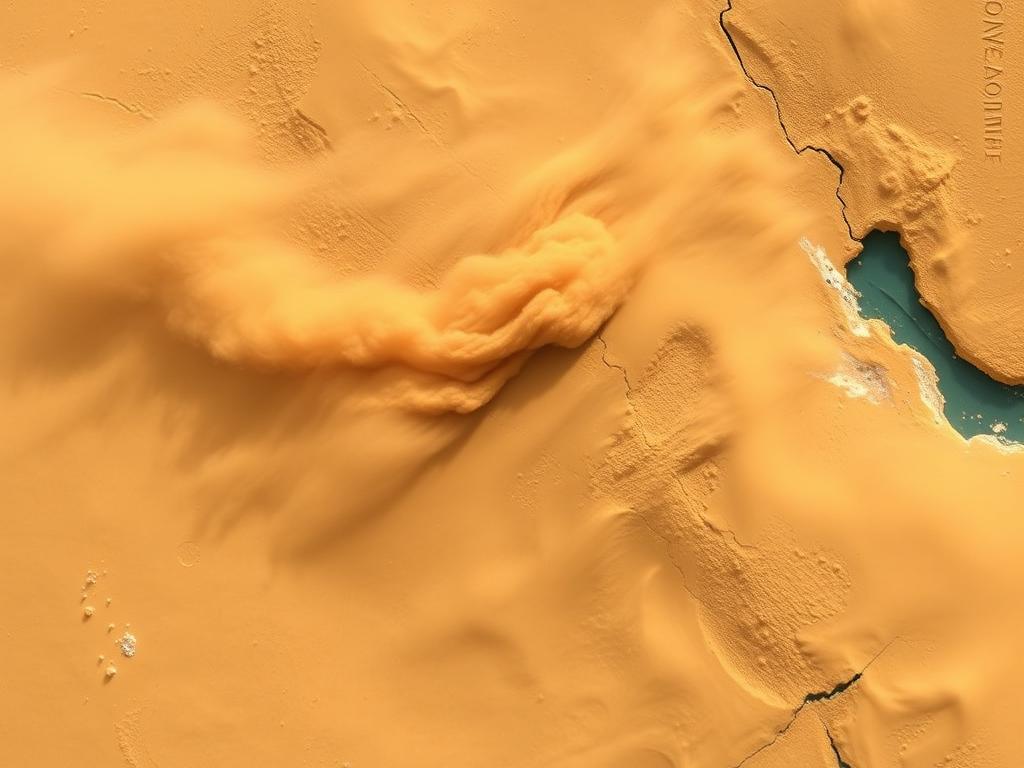Every year, millions of tons of dust particles travel thousands of miles from the Sahara Desert in Africa to regions far across the Atlantic Ocean. One of the places profoundly affected by this natural phenomenon is Puerto Rico. Known locally as «el polvo del Sahara,» this dust cloud doesn’t just discolor our skies — it has very real health implications, especially for those suffering from asthma. In this article, we’ll explore what Sahara dust is, how it travels, why it impacts asthma in Puerto Rico, and what residents can do to protect themselves. Whether you’re a parent worried about your child’s asthma or simply curious about this meteorological event, you’ll find valuable insights here.
What Is El Polvo del Sahara?
El polvo del Sahara refers to the fine sand and dust particles lifted from the Sahara Desert, one of the largest deserts in the world, located in North Africa. During specific times of the year, strong winds, often powered by the Saharan Air Layer—an air mass that forms over the desert—pick up millions of tons of this dust and carry it westward across the Atlantic Ocean. The dust cloud can spread over thousands of miles, reaching as far as the Caribbean, including Puerto Rico, and even the southeastern United States.
These dust particles are mostly composed of minerals, such as iron, silica, and aluminum oxides. While these might sound harmless, their impact on air quality and human health can be significant, especially for vulnerable populations.
How Does the Sahara Dust Travel to Puerto Rico?
The journey of Sahara dust to Puerto Rico happens annually, usually between late spring and early summer (from May to August). This period coincides with increased atmospheric conditions favorable for transporting dust: strong winds, warm temperatures, and a sufficiently high Saharan Air Layer. The dust gets airborne, travels across the Atlantic Ocean riding trade winds, and finally descends over Puerto Rico and nearby islands.
This transatlantic journey takes several days and covers an average distance of approximately 4,000 kilometers (about 2,500 miles). When the dust arrives, it often causes a visible haze or a noticeable “yellowish” tint in the sky, which island residents can quickly identify.
The Impact of Sahara Dust on Asthma in Puerto Rico

Asthma is a chronic respiratory disease characterized by inflammation and narrowing of the airways, making breathing difficult. It’s especially prevalent in Puerto Rico, where studies show that asthma rates are higher than in many other parts of the United States. This prevalence makes the island particularly vulnerable to environmental triggers such as el polvo del Sahara.
When Saharan dust particles settle in the air, they can exacerbate asthma symptoms in several ways. The tiny dust particles penetrate deep into the lungs, triggering inflammation, allergic reactions, and narrowing of the bronchial tubes that restrict airflow. For individuals with asthma, this can mean more frequent and severe asthma attacks, increased coughing, wheezing, chest tightness, and shortness of breath.
Experts note that the fine particulate matter (PM10 and PM2.5) transported by Sahara dust can act as an irritant or allergen, compounding other factors such as humidity, mold spores, and airborne pollutants already present in Puerto Rico. Research has connected dust events to spikes in emergency room visits for asthma and other respiratory issues on the island.
Who Is Most at Risk?
While anyone can be affected by poor air quality during a Saharan dust event, certain groups are particularly vulnerable:
- Children with asthma: Young lungs are still developing and can respond more severely to irritants.
- Elderly people: Aging respiratory systems are more sensitive to air pollution.
- People with chronic respiratory diseases: Those living with asthma, COPD, or other lung conditions.
- Individuals with allergies: Dust acts as an allergen that can worsen respiratory symptoms.
Environmental and Health Data: What Do We Know?
Over recent years, Puerto Rican environmental agencies and health departments have monitored the levels of particulate matter during Saharan dust seasons. Scientific studies have highlighted the correlation between Saharan dust exposure and increased hospital admissions due to asthma exacerbations.
Here’s a simple table summarizing key points of the impact based on collected data:
| Aspect | Effect of Sahara Dust | Health Implications |
|---|---|---|
| Air Quality Index | Dust increases PM10 and PM2.5 levels significantly | Poorer air quality leading to respiratory discomfort |
| Hospital Visits | Spike in asthma-related emergency visits during dust events | Higher strain on healthcare facilities and patients |
| Visibility | Reduced visibility due to haze | Increased accident risk and outdoor activity limitations |
| Seasonality | Most severe impact from May to August | Seasonal increase in respiratory symptoms for asthmatics |
How Does the Dust Affect Daily Life?
During periods of high Sahara dust concentration, residents of Puerto Rico often experience more than just health effects. The haze can dim sunlight, reduce visibility, and create a dusty film over outdoor surfaces. Individuals with respiratory conditions may avoid outdoor activities to prevent symptom flare-ups. Schools may send notices to parents advising to limit children’s outdoor play, especially for kids with asthma. In some cases, government agencies issue air quality alerts to warn the public.
Protecting Yourself and Loved Ones from the Effects of Sahara Dust
Awareness and preparedness are crucial for those living in Puerto Rico during the Saharan dust season. Here are some practical steps to minimize the impact of el polvo del Sahara on asthma and respiratory health:
Monitoring Air Quality
One of the most effective ways to stay safe is to keep an eye on local air quality indexes (AQI) and dust forecasts. Several government and private websites provide real-time updates on particulate levels and Saharan dust activity. These resources can help you plan your day better, reducing exposure during high dust concentrations.
Creating a Safe Indoor Environment
- Keep windows and doors closed: Preventing dust particles from entering your home is essential.
- Use air purifiers: Devices with HEPA filters can reduce indoor particle levels effectively.
- Clean frequently: Dust can settle on surfaces, so wiping down furniture and floors helps reduce indoor allergens.
Avoiding Outdoor Exposure
Try to stay indoors as much as possible when air quality is poor. If you need to go outside, consider wearing a mask that filters fine particles, such as an N95 respirator. This can be particularly important for people with asthma or other lung conditions.
Follow Your Asthma Action Plan
For those diagnosed with asthma, sticking to your prescribed treatment plan during Saharan dust events can help prevent severe attacks. This includes taking daily controller medications, carrying rescue inhalers, and recognizing early warning signs of worsening symptoms.
Community and Public Health Measures
Local authorities play a role in issuing dust alerts and promoting awareness campaigns. Schools, workplaces, and healthcare providers often coordinate efforts to minimize the public health impact of dust events.
Common Myths and Misconceptions About Sahara Dust and Asthma
There are several misunderstandings around el polvo del Sahara that can lead to panic or complacency. Let’s clear up some of the most common myths:
- Myth: Sahara dust only affects the environment, not human health.
Reality: The dust can seriously exacerbate respiratory diseases like asthma. - Myth: You don’t need to worry if you feel fine.
Reality: Even those without current symptoms can experience irritation or delayed effects from dust exposure. - Myth: Masks don’t help against Sahara dust.
Reality: Proper masks like N95 respirators can filter out harmful particles and reduce risk. - Myth: This dust event is a new phenomenon.
Reality: Saharan dust has been traveling across the Atlantic for centuries, but climate and environmental changes may affect intensity and frequency.
Future Outlook: Climate Change and Sahara Dust in Puerto Rico

Scientists are paying close attention to how climate change might influence the behavior of Sahara dust clouds. Rising global temperatures, shifts in wind patterns, and desertification could alter the frequency, intensity, and timing of dust transport. For Puerto Rico, this could mean more severe or prolonged dust exposure in the coming decades, which could worsen asthma and other respiratory issues on the island.
Understanding and adapting to these changes will require coordinated efforts from meteorologists, health professionals, government officials, and the community. Improved air monitoring technology, enhanced public awareness campaigns, and healthcare support are vital to reducing the health burden associated with el polvo del Sahara.
Summary: Key Takeaways About Sahara Dust and Asthma in Puerto Rico
- El polvo del Sahara consists of fine dust particles originating from Africa’s Sahara Desert.
- Puerto Rico experiences these dust events annually, mainly between May and August.
- The dust increases particulate matter in the air, worsening asthma symptoms and respiratory health.
- Children, elderly, and those with respiratory conditions are most vulnerable.
- Protective strategies include monitoring air quality, limiting outdoor exposure, and maintaining asthma treatment plans.
- Climate change may influence future dust patterns, potentially increasing health risks.
Additional Resources

If you want to learn more or stay updated on Sahara dust forecasts and asthma management, these resources can be quite helpful:
- U.S. Environmental Protection Agency – Air Quality
- NASA – Saharan Dust Monitoring
- Puerto Rico Department of Health
- American Lung Association
Conclusion
El polvo del Sahara is a fascinating yet challenging natural event for Puerto Rico, not just because it transforms our skies but also because it deeply affects the health of many residents, particularly those living with asthma. Understanding what this dust is, how it travels, and how it impacts respiratory health can empower individuals and communities to take proactive measures to protect themselves. By staying informed, monitoring air quality, and following recommended health practices, people in Puerto Rico can better manage asthma symptoms during dust seasons. Moving forward, as climate dynamics continue to evolve, it is more important than ever to foster cooperation between scientific research, public health initiatives, and local communities to mitigate the negative impacts of Sahara dust on the island. Staying vigilant and prepared will help ensure healthier lungs and brighter skies for Puerto Rico in the years to come.
